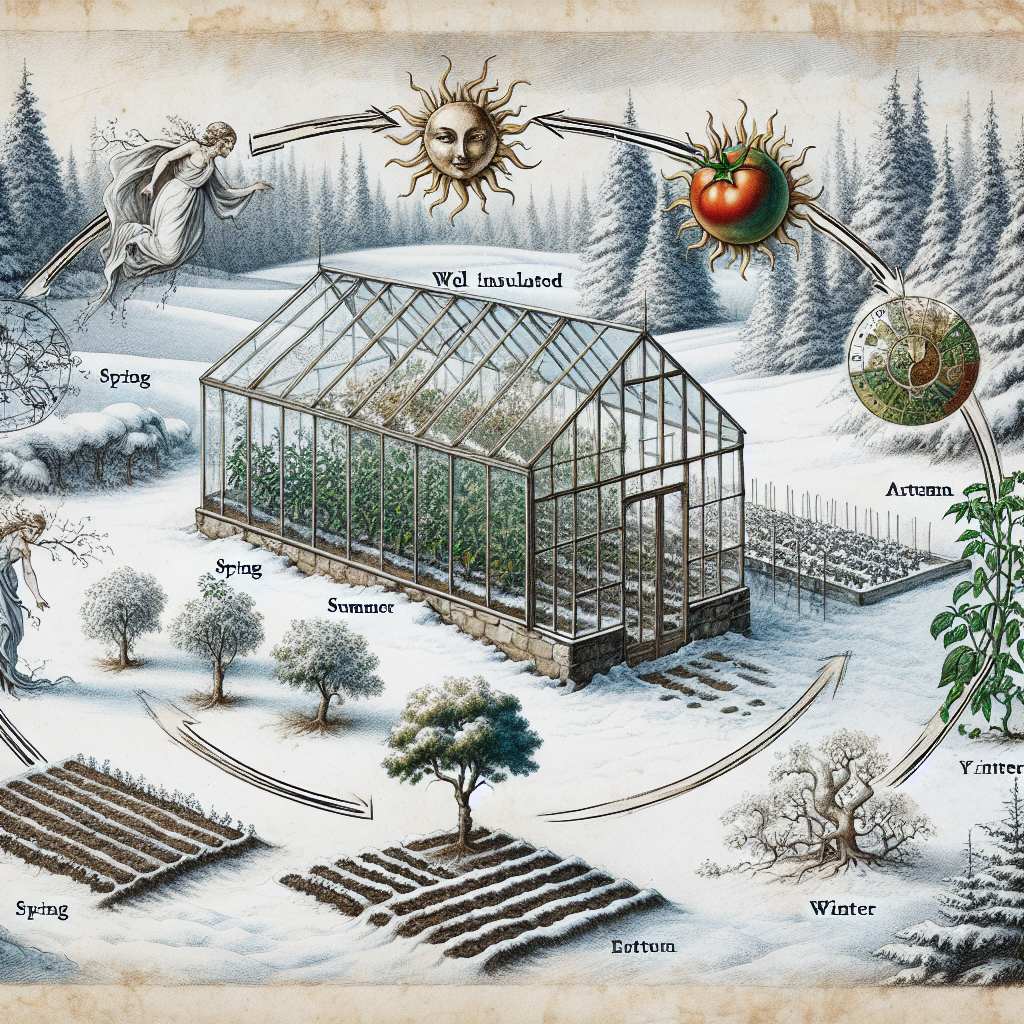
Want to keep your greenhouse gardens thriving during the winter? Look no further than crop rotation. By strategically rotating crops, you can maintain soil health, prevent the build-up of pests and diseases, and ensure a bountiful harvest year after year. In this article, we will explore the benefits of crop rotation and provide practical tips for implementing it in your winter greenhouse gardens. So, grab your gardening gloves and get ready to transform your greenhouse into a haven of vibrant, healthy plants!
Importance of Crop Rotation in Winter Greenhouse Gardens
Crop rotation is a key practice in maintaining a healthy and productive winter greenhouse garden. The benefits of crop rotation are numerous, ranging from maximizing soil fertility and health to reducing pest and disease pressure. By rotating crops, you can effectively manage nutrient imbalances and improve overall plant vigor. In this article, we will explore the importance of crop rotation in winter greenhouse gardens and provide practical tips and strategies for implementing this technique.
1. Planning for Crop Rotation in a Winter Greenhouse Garden
Before diving into crop rotation, it is crucial to analyze the previous season’s crops and evaluate their performance. Assessing the successes and failures of different crops will help you make informed decisions when planning for the upcoming season. Additionally, mapping out your greenhouse space and considering the requirements of different crop families will ensure that you allocate the right areas for rotation.

2. Determining Suitable Winter Crops for Rotation
When selecting crops for rotation in a winter greenhouse garden, it is essential to identify cold-tolerant varieties. These crops can withstand the lower temperatures and provide a continuous harvest throughout the winter months. Prioritizing crops with complementary growth habits is also beneficial, as it prevents the excessive depletion of specific nutrients from the soil. Lastly, choosing crops with varying nutrient requirements can help balance the overall nutrient content in the greenhouse.
3. Creating Crop Rotations in Winter Greenhouse Gardens
Implementing a crop rotation schedule is a fundamental step in maintaining soil health and preventing the buildup of pests and diseases. Designing crop successions for continuous harvest ensures a steady supply of fresh produce throughout the winter season. Furthermore, integrating cover crops and green manure adds organic matter and promotes soil fertility, creating an ideal environment for future crops.

4. Crop Rotation Techniques and Strategies for Winter Greenhouses
Strict rotation is a vital technique to implement in winter greenhouse gardens. By avoiding the repetition of crop families in the same bed, you can minimize the risk of pests and diseases establishing a strong presence. Additionally, crop spacing and intercropping optimize resource utilization and create a more efficient growing environment. Utilizing both transplanting and direct seeding techniques further enhances the success of crop rotation.
5. Best Practices for Soil Management in Rotated Winter Greenhouse Gardens
soil testing and amendment adjustment based on crop requirements are essential practices in maintaining soil fertility. Regularly testing the soil pH and nutrient levels allows you to make informed decisions when applying organic amendments or fertilizers. Implementing organic mulching and composting helps retain moisture, suppress weeds, and improve overall soil structure. Balancing pH and nutrient levels ensures that plants have access to the necessary elements for healthy growth.
6. Pest and Disease Management in Winter Greenhouse Crop Rotations
Crop rotation plays a significant role in breaking pest and disease cycles. By rotating crops, you disrupt the life cycles of pests and diseases, reducing their ability to establish and spread. Implementing physical barriers, such as insect netting, and screening can further prevent pests from entering the greenhouse. Additionally, introducing beneficial insects and implementing biological controls provides natural and sustainable pest management.
7. Benefits of Cover Crops in Winter Greenhouse Crop Rotations
Cover crops offer a range of benefits in winter greenhouse crop rotations. They improve soil structure, preventing erosion and promoting better water percolation. Cover crops also add significant amounts of organic matter to the soil, enriching it with essential nutrients. Another advantage of cover crops is their ability to suppress weed growth, reducing competition for resources and enhancing biodiversity in the greenhouse.
8. Timing and Duration of Crop Rotations in Winter Greenhouse Gardens
When planning crop rotations, it is essential to consider the growth rates and maturation times of different crops. This information helps determine when to rotate crops, ensuring a continuous harvest throughout the winter season. Scheduling regular rotations based on planned harvests allows for optimal space utilization and minimizes downtime between crops. Adjusting rotations for continuous year-round production ensures that the greenhouse remains productive even outside the winter season.
9. Challenges and Solutions in Crop Rotation for Winter Greenhouse Gardens
Winter greenhouse gardens often face challenges such as limited space and greenhouse layout constraints. However, with careful planning and efficient use of available space, even small greenhouses can benefit from crop rotation techniques. Managing crop residue and potential disease carryover can be addressed by removing plant debris, sanitizing equipment, and implementing proper quarantine measures. Adapting rotations to changing climate conditions requires staying informed about weather patterns and adjusting planting schedules accordingly.
In conclusion, crop rotation is a crucial practice for maintaining the health and productivity of winter greenhouse gardens. By maximizing soil fertility, reducing pest and disease pressure, managing nutrient imbalances, and improving overall plant vigor, crop rotation serves as a cornerstone of successful greenhouse gardening. By following the planning, selection, and implementation strategies outlined in this article, you can create thriving winter greenhouse gardens that provide fresh, nutrient-rich produce throughout the winter season.

